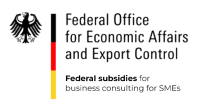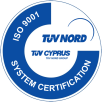EU Product Safety Regulation
Product safety is one of those issues that many e-commerce sellers tend to neglect. This is because infractions usually do not entail any consequences, especially in product categories that are not or scarcely monitored by the authorities.
However, the introduction of the new EU Product Safety Regulation could fundamentally change that. This blog post will tell you all about the far-reaching consequences that this Regulation has for e-commerce sellers, when it comes into effect, and which products are affected.
Legal background
Until now, the German Product Safety Act (Produktsicherheitsgesetz, ProdSG) regulated the requirements that have to be fulfilled, e.g., in terms of product and packaging labeling, when a product is planned to be sold on the German market. The Product Safety Act implemented the General Product Safety Directive 2001/95/EC of the EU.
As of April 25, 2023, the European Council adopted the new EU Product Safety Regulation (GPSR). This means that the old Directive 2001/95/EC is being replaced by the new Regulation. If you do not yet know the difference between a Directive and a Regulation, you can learn more about it in this blog post.
Due to this fact, the German Product Safety Act is replaced to a large extent as well. The Product Safety Act will then apply almost exclusively for the B2B segment. The GPSR is introduced in order to ensure that only safe non-harmonized consumer products are marketed. Furthermore, the GPSR is intended to cover digitized products and the challenges posed by new business models as well.
When does the new Product Safety Regulation come into effect?
The new Product Safety Regulation came into force as of June 12, 2023. It will apply as of December 13, 2024. Enough time to prepare for the changes it brings, at least in theory. During the 18-month transitional period, non-harmonized consumer products may still be sold on the market pursuant to the Directive 2001/95/EC and the Product Safety Act. At the end of the transitional period, the Regulation applies directly in every EU member state.
Who is affected by the new Product Safety Regulation?
Economic operators doing business in the EU are directly affected. This includes manufacturers, authorized representatives, importers and sellers. Furthermore, the Regulation expands the personal scope of application. This means that fulfillment service providers and online marketplaces such as Amazon are now considered to be economic operators as well.
Which products are affected by the new Regulation?
The Regulation is first and foremost meant to protect the consumers. Consequently, it covers all kinds of products intended for sale to consumers.
The most important changes for e-commerce sellers
Advanced date of application and its consequences
A product is deemed to be made available on the market, and thus put into circulation, when it is offered for sale to consumers online or by some other means of distance sales. The date of the first actual sale is irrelevant in this context!
Therefore, economic operators have to disclose certain information already when they offer a product:
- Label of the manufacturer
- Name
- Registered trade name or registered trademark
- Mail address
- Email address
- For manufacturers who are not registered in the EU, you have to indicate the person in charge (e. g., the authorized representative)
- Name
- Mail address
- Email address
- Clear and visible warnings and/or safety information

New product safety assessment criteria
The GPSR significantly expands and tightens the assessment criteria used to verify whether a product is safe. Some of the assessment criteria listed in Article 6 of the GPSR are:
- Product characteristics (design, technical features, instructions, packaging, construction)
- Possible effects of and on other products
- Product labeling
- Consumer-specific aspects of the categories of consumers concerned, or gender-specific differences regarding health and safety
- Appearance of the product, particularly regarding products the appearance of which is likely to lead the consumer to use the product in a way different to what it was designed for
- Cybersecurity features
Manufacturer’s obligation to carry out an internal analysis
Another serious change resulting from the new Regulation is the obligation for manufacturers to do an internal risk analysis for every single product. This analysis and the corresponding technical documentation must at least contain a general description of the product and its essential characteristics relevant for assessing its safety. There is no threshold clause that would allow for the process to be avoided for less complex products.
Substantial product modifications
If a product is substantially modified, the person carrying out such modification is deemed to be the manufacturer. Consequently, the manufacturer’s obligations are transferred to this person.
A physical or digital modification of a product is deemed to be substantial if it affects the safety of the product and
- changes the product in a manner which was not foreseen in the initial risk assessment;
- the nature of the hazard has changed, a new hazard has been created or the level of risk has increased because of the modification;
- the modifications have not been made by the consumer themselves or on the consumer’s behalf for their own use.
Irrespective of such modifications, you continue to be considered the manufacturer if your brand or address is affixed to the product and the packaging.
Marketability of all consumer products tied to the existence of an EU economic operator
The marketability of non-harmonized consumer products will be tied to the existence of an EU economic operator in the future. For products imported from third countries, this is usually the importer, who is then subject to the respective testing and labeling obligations. The Regulation 2019/1020 already provides for a corresponding regulation for harmonized products.
Traceability requirements
The introduction of the GPSR enables the European Commission to establish a centralized tracking system, making it easier to trace products that are likely to present a serious risk to the health and safety of consumers.
Obligation to report accidents
In the case of an accident caused by the product that results in the death of the consumer or damage to their health, the manufacturer has to report such an accident to the relevant authorities immediately (upon becoming aware of it). Depending on the member state in which the accident occurred, the relevant authorities may differ.

Accidents are reported through the so-called Safety Business Gateway. Importers and sellers are furthermore obligated to report such incidents to the manufacturer, who must in turn fulfill their corresponding obligations. If the manufacturer is not located in the European Union, the EU economic operator is responsible for making the report.
Conclusion
It is clear that market surveillance activities will be seriously intensified as of Dec 13, 2024. Even product categories that have, until now, been ignored by the market surveillance authorities may then be subject to much stricter surveillance. Furthermore, the relatively short 18-month transitional period gives economic operators little time to adapt their products to the new regulations.
Consequently, e-commerce sellers ought to start preparing right away in order to get ready for the new product safety regulations. This includes evaluating their own business model in regard to the new requirements pursuant to the GPSR, since adjusting internal processes in particular is often difficult and time-consuming.
If you are unsure whether and how the new Product Safety Regulation affects you, and which changes may await you, feel free to make a non-committal appointment for an initial consultation with our compliance experts. Together, we will examine where you need to take action, and check how we can best support you with your projects.
You need assistance?
It is best to book an appointment directly for a free initial consultation.
Who wrote this article?
As an author, Christina fills the blog section of our website with exciting and informative articles, so that our readers can always take care of product compliance in their company in the most well-informed way.
- Christinahttps://compliance.tradavo.eu/en/author/epywxge/
- Christinahttps://compliance.tradavo.eu/en/author/epywxge/
- Christinahttps://compliance.tradavo.eu/en/author/epywxge/
- Christinahttps://compliance.tradavo.eu/en/author/epywxge/







